LS1: The Engine That Changed it All The LS1 (5.7 liter, 346ci) was the engine…
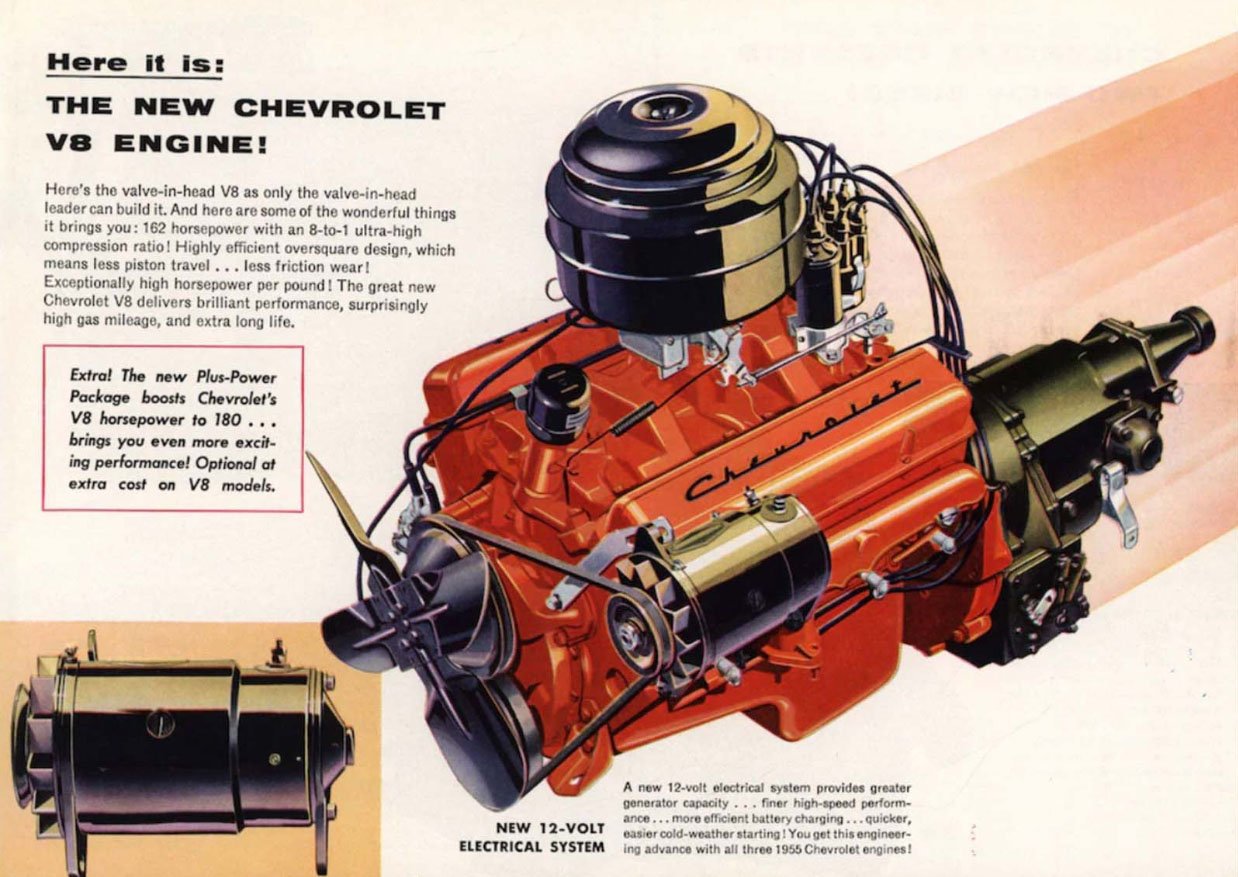
A Retrospective on the Legendary Small-Block Chevy V8: Its Journey Through the Years – Part 2
The Gen-III Chevy Small-Block V-8: The LS1
GM’s Generation III engine first hit the scene in 1997 in the all-new C5 Corvette before being stuffed into a Camaro for 1998. The LS series engines had little in common with the first two generations of the small-block Chevy, but still used pushrods and a 4.40-inch bore spacing. Most truck versions of the Gen III engine family had an iron block and aluminum heads, but the performance engines had aluminum blocks with six-bolt main caps.
In the Corvette, the LS1 made 345 horsepower and 350 lb-ft of torque. It arrived in the F-body twins a year later, making 305 horsepower in Z28 and Formula trim and 325 horsepower with the SS and Trans Am ram-air packages (although dyno tests at the time showed the stated power numbers for the F-bodies to be underrated).
Gen-III engines introduced coil-near-plug ignition in place of a distributor and redesigned heads for increased airflow and power. The LS1 had a smaller bore and longer stroke than the Gen I and Gen II 350/5.7-liter V-8s. The new engine used a 3.89-inch (99.0 mm) bore and a 3.62-inch (92 mm) stroke, for a total displacement of 345.7 cubic-inches, or 5.7 liters.
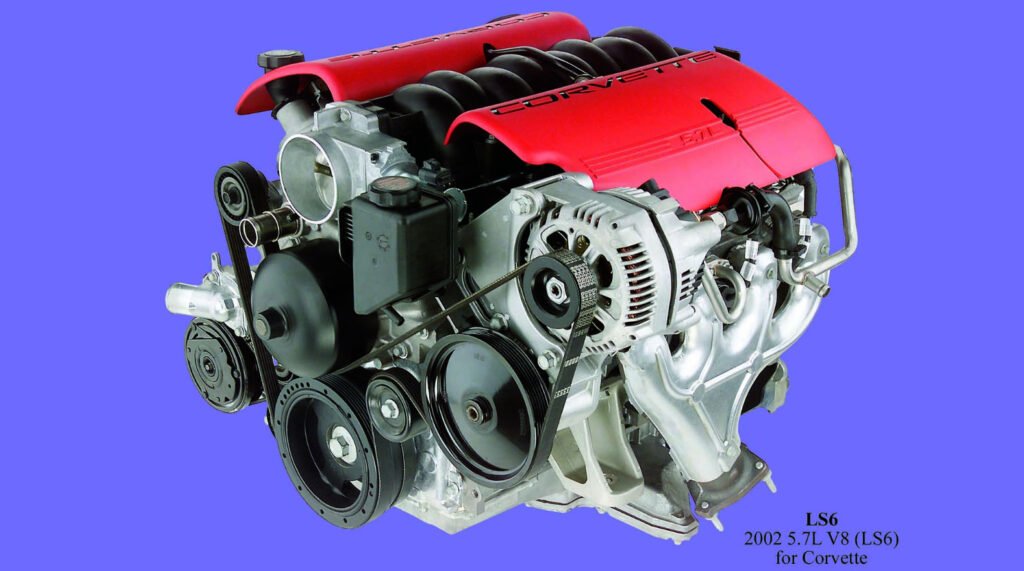
LS6: The Gen-III LS1 Gets Refined for the Track
In 2001, the Corvette Z06 was introduced with a higher-performance 5.7-liter called the LS6 . Power was bumped to 385 horsepower and 385 lb-ft of torque. The next year it received another bump in power, to 405 horsepower and an even 400 lb-ft of torque. The LS6 was used in the Corvette Z06 until the C5 was replaced by the C6 in 2005. Cadillac used the LS6 in the first-generation CTS-V from 2004-2005.
The LS6 was based on the LS1 engine but had a stronger block, a redesigned intake manifold and larger MAF-sensor for better breathing, a bigger camshaft, higher compression ratio, and a revised oiling system for track use. The LS6 showed the versatility of the new LS platform and soon the architecture spread like wildfire through GM, where the engine found its way into many cars as well as trucks, SUVs, and similar, under the Vortec badge .
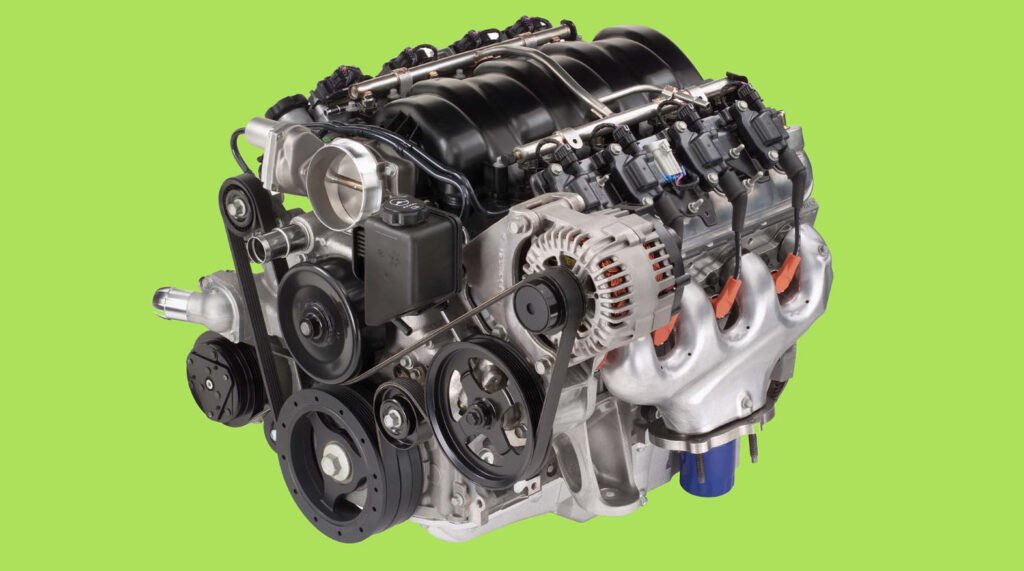
The Gen IV LS7: Built for the track!
The Gen-IV small-block Chevy V-8 hit the streets in 2005 as the 6.0-liter LS2 (which eventually evolved into the 6.2-liter LS3), based on the Generation-III but redesigned to utilize displacement-on-demand and variable-valve-timing technologies. The Gen-IV LS7 is the largest factory-installed small-block Chevy V-8 ever, displacing 427.8 cubic inches, or just over 7.0 liters. It featured the same bore as the 1970s 400-cubic-inch engine at 4.125 inches (104.8 mm), but unlike the 400 the LS7 got a full 4.00-inch-stroke crankshaft. The 7.0-liter small-block monster has a 7,100-rpm redline and churns out an astonishing 505 horsepower and 470 lb-ft of torque—the most net horsepower of any naturally aspirated small-block in GM’s history.
Still based on the original 4.4-inch bore spacing, the LS7 uses pressed-in cylinder liners, and forged-steel bearing caps, forged titanium connecting rods, and hypereutectic pistons for strength. Intake valves are titanium and exhaust valves are sodium-filled. The hand built LS7 was assembled at the General Motors Performance Build Center in Wixom, Michigan, and featured a dry-sump oiling system (although GM did make wet-sump versions) to cope with high lateral g-forces experienced during track days and enthusiastic driving. In North America the engine came factory-equipped in the 2006 to 2013 Corvette Z06, in the 5th-gen Z/28 Camaro, or as a crate engine. In 2022 the dry-sump LS7 was discontinued as a crate engine.
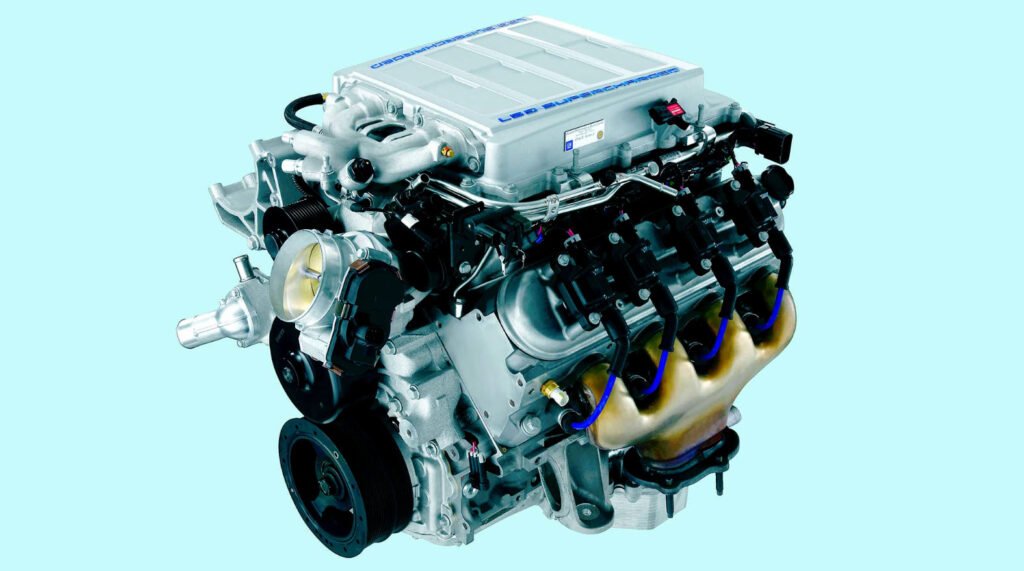
LS9: The Small-Block Gets a Blower!
A serious highlight in the small-block V-8’s history would have to be the Gen-IV LS9 engine, a 6.2-liter (376-cubic-inch) engine topped with a four-lobe Roots-style Eaton 2300 TVS supercharger. The LS7 was considered for the base engine, but the smaller bore and thicker cylinder walls of the LS3 engine were required for durability under boost. Bore is 4.06 inches (103 mm) and stroke is 3.62 inches (92 mm). Power is rated at 638 horsepower at 6500 rpm, and 604 lb-ft of torque at 3800 rpm—the most powerful factory-installed small-block Chevy ever. No surprise that the engine debuted in the most extreme sports car ever from GM, the 2009 C6 Chevrolet Corvette ZR1. In our testing the ZR1 went from 0 to 60 mph in 3.3 seconds and cleared the quarter-mile in 11.2 seconds at 130.3 mph .

LSA: Smaller Blower but Still a Powerhouse!
The LSA is a detuned version of the LS9 engine that debuted in the 2009 Cadillac CTS-V and was later used in the 5th-generation Camaro ZL1. This version is still capable of a substantial 556 horsepower and 551 lb-ft of torque. It is the most powerful engine ever offered in a Cadillac up to that point and was available in all three CTS body styles: the sensuous coupe, sedate sedan, and practical wagon. This engine is capable of pushing the nearly-4,353-pound wagon to 60 mph in 4.1 seconds and through the quarter-mile in 12.5 seconds at 114.8 mph. There are dozens of LS/Vortec engine variants .

Gen-V LT1: New Technologies for an Evolving Marketplace
For whatever reason, GM loves reusing engine designations, which makes keeping track a bit confusing. The Gen-V LT1 (not to be confused with the Gen-I LT-1 or the Gen-II LT1) is a 6.2-liter V-8 that was first introduced in the 2014-2019 C7 Corvette and later the 2016-2023 Camaro.
This LT1 was quite a departure from the previous small-block and incorporated some of the most significant redesigns in the 60-year history of the small-block. The only major aspects carried over from the 1955 small-block were the cam-in-block design and 4.400-inch bore centers. The Gen-V LT1 is full of advanced technology, including direct injection, oil-spray piston-cooling, variable valve timing, and active fuel management. The version in the Corvette produced 460 horsepower and 465 lb-ft of torque and helped GM meet new emissions and CAFE standards.
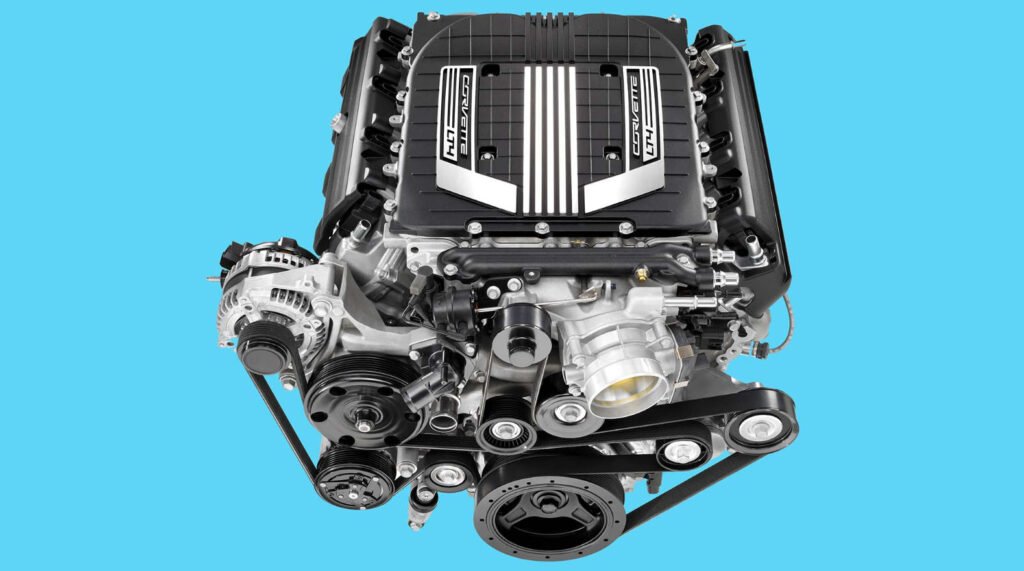
Gen-V LT4: The LT1 Gets a Blower and a Whole Lot More!
With the success of the previous LS9 and LSA engines, boost was now a “thing” at GM, so it was inevitable that a blower would find its way on top of the new Gen-V engines. The LT4 displaces 6.2 liters and debuted on the C7 Z06 Corvette before finding its way into the Cadillac CTS-V, Cadillac CT4 Blackwing, and the sixth-gen Camaro ZL1 .
At the time, the LT4 was the most powerful production engine ever stuffed into a GM vehicle. It built on the lessons learned from the LS9 and added all the new technologies of the Gen-V LT1. Topping the LT4 is a next-gen 1.7-liter Eaton supercharger. In the Z06 Vette it put out 650 hp and an equal amount of torque, but for the Blackwing that output was increased to 668 hp and 659 lb-ft of torque. In 2023 it was announced that the Escalade-V SUV would get an LT4 that puts out an astounding 682 hp! As of early 2023, the dry-sump version of the LT4 has been discontinued, but the wet-sump version is still for sale as a crate engine.
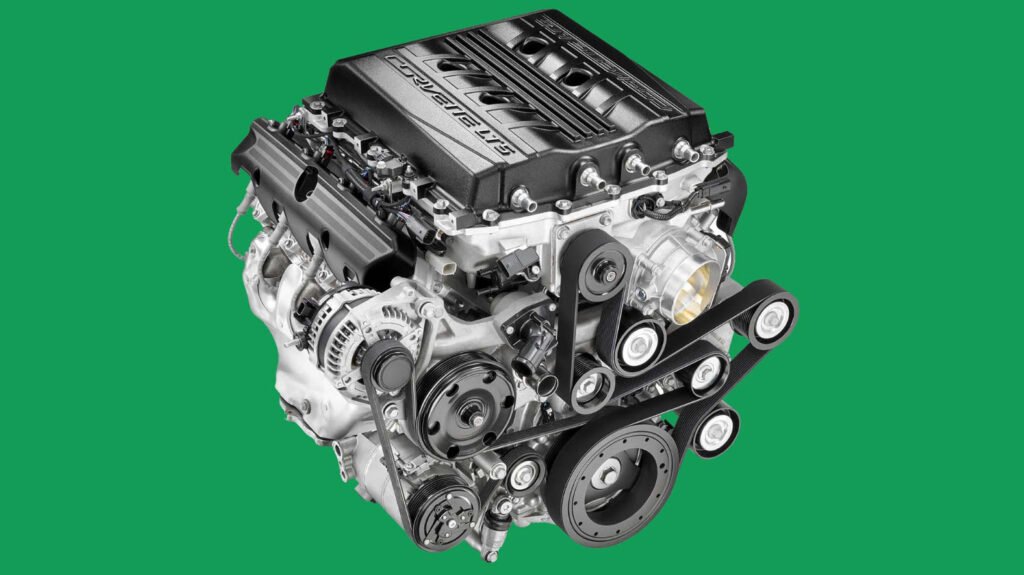
Gen-V LT5: The Most Powerful Small-Block Engine to Date!
The C7 Corvette went out with a big, supercharged bang: the ZR1, powered by the 6.2-liter LT5. It’s a beastly thing, cranking out 755 horsepower courtesy of a 2.65-liter Eaton supercharger. It’s based on the venerable LT4 engine, but there’s a host of new go-faster bits: a 95 mm throttle body, port- and direct-injection, a stronger crankshaft, a new oiling system, and a 52-percent-larger supercharger. Peak boost tops out at 13.96 psi near max rpm.
But unlike the Corvette’s LT4, there’s less propensity for heat-related issues thanks to four new heat exchangers and 41-percent more cooling airflow overall. All this power is good to rocket the ZR1 to a 3.2-second 0-to-60 time and an 11.2-second quarter-mile in our testing. What a finale! Sadly, after a very short production run, the LT5 was discontinued in 2021 .
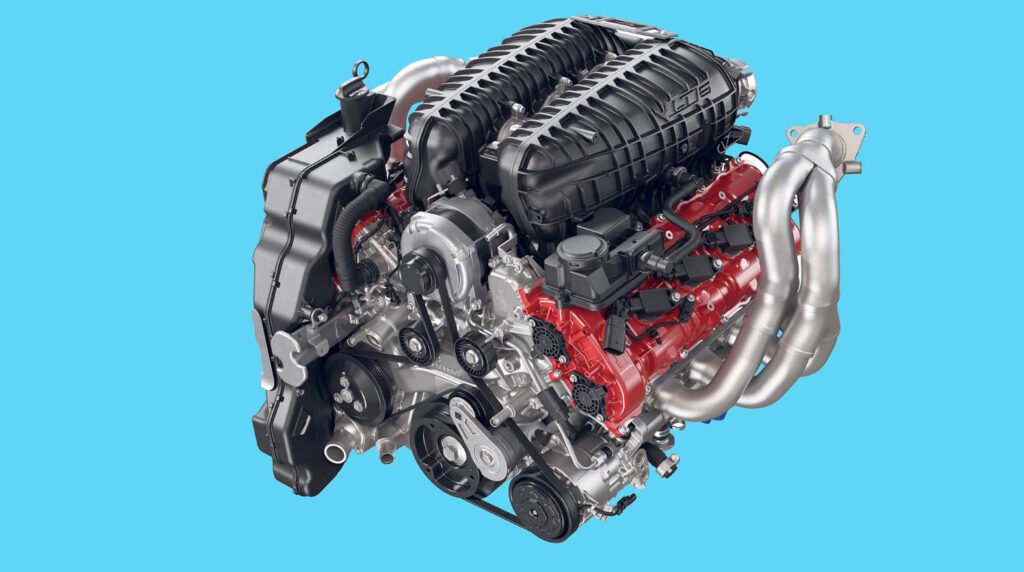
LT6: A Flat-Plane Crank and a Radical Shift in Small-Block Development!
Even though the LT6 is a radical departure from the new LT1, it’s still considered a Gen-V small-block. The most notable change for this 5.5-liter LT6 is the use of a flat-plane crank . This change gives the LT6 a unique engine note usually reserved for European supercars. Built to power the cutting-edge C8 Z06 Corvette, this technological marvel has as much in common with the first small-block as an F-22 Raptor has in common with a WWI bi-plane.
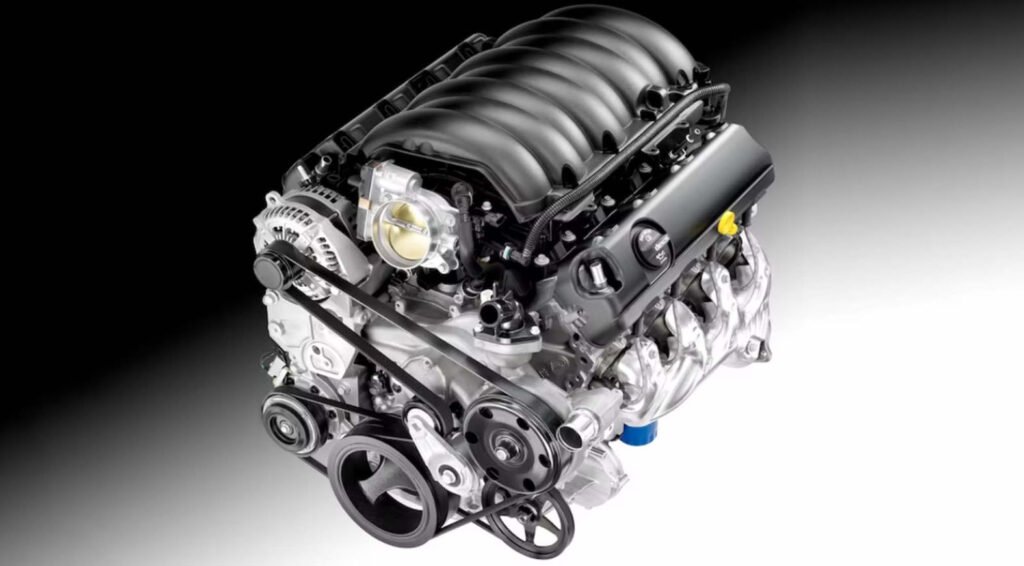
Gen VI V-8: The future of the Chevrolet Small-Block!
GM may be riding the EV bandwagon, but that doesn’t mean the small-block V-8 is dead. In 2023, GM announced that it’s investing heavily in a new Gen-VI V-8 engine to power their full-size trucks and SUVs (at least for now).
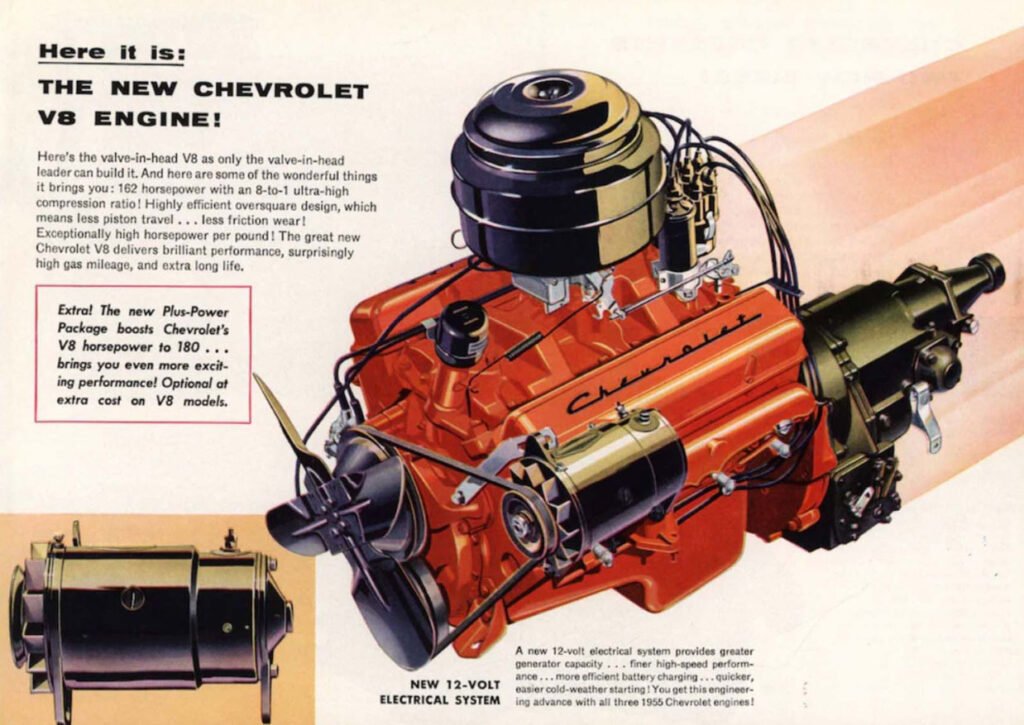
Chevy Small-Block: Final Thoughts
With nearly 25 years under its belt in truck and passenger-car duty, the LS-series family has become widely available, and, due to the vast number of them out there, very affordable. The aftermarket has embraced it in much the same way it did the original small-block Chevy V-8.
“As the original small-block Chevy becomes harder to find in junkyards, we continue to see GM’s LS engine taking over where the original small-block left off,” said Tichenor. “LS engines are readily available and are even easier to make power with than the original. They are extremely reliable and smooth, and now Holley is making speed parts for the LS and LT engines just as we did for the traditional Gen-I small-block Chevy.”
As the LS engines age and become harder to source, the newer LT variants will pick up the slack, and we’re sure even the newest Gen-VI mills will find their way under the hoods of hot rods and customs—and, of course, the original Gen-I small-block V-8s will continue to power a vast number of our classic rides.
This article was originally published in 2011 and has been moderately edited and updated for context, clarity, and additional information.




Comments (0)